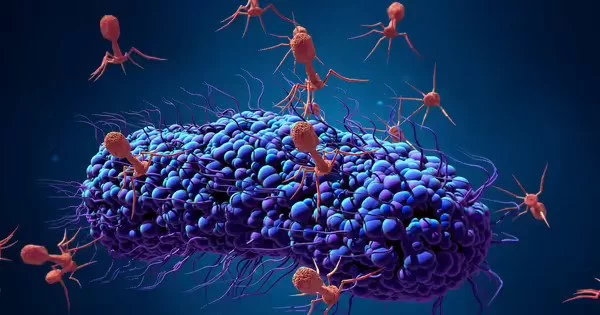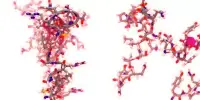The discovery of a virus that can kill resistant bacteria is an exciting development in the fight against antibiotic-resistant infections. Bacteriophages, also known as phages, are viruses that can infect and kill bacteria. They are a natural enemy of bacteria and are found in abundance in the environment, including in soil, water, and even inside the human body.
Odense Å and Lindved Å creeks in Denmark have surprised researchers and students at SDU by containing previously unknown virus species. “We have discovered five new species that we believe are unknown to science,” said associate professor Clare Kirkpatrick, who studies bacterial stress response at the University of Southern Denmark’s Department of Biochemistry and Molecular Biology.
During the coronavirus pandemic, when some of Kirkpatrick’s students were unable to conduct their normal microbe studies in the laboratory, they went on field trips to local creeks to see if they had any interesting microbes to offer.
The existence of viruses in nature is not surprising given that they are the most common organism on the planet. They are everywhere and are part of a variety of microbial cycles and ecosystems, but Clare Kirkpatrick was surprised to discover five potentially new species in local creeks.
We could see it with our own eyes: clear holes appeared in the layer of Pseudomonas aeruginosa bacteria in our petri dishes, where Fyn8 had infected, killed, multiplied, and then attacked the next.
Clare Kirkpatrick
While four of the five species have yet to have their genomes sequenced, one has been fully sequenced, scientifically described, named, and published in Microbiology Resource Announcements. Fyn8 is my name. Many viruses, including Fyn8, are bacteriophages (or phages), which means they kill bacteria. It has the ability to attack and kill the bacteria Pseudomonas aeruginosa.
Pseudomonas aeruginosa is a bacterium that can be found in soil and water. It is normally harmless to healthy people, but it, like many other bacteria, has developed antibiotic resistance and is found in hospitals. Patients with wounds (such as burn patients) and ventilator patients, for example, are at risk of contracting an infection that cannot be treated with antibiotics.
The researchers are confident that Fyn8 can kill Pseudomonas aeruginosa:
“We could see it with our own eyes: clear holes appeared in the layer of Pseudomonas aeruginosa bacteria in our petri dishes, where Fyn8 had infected, killed, multiplied, and then attacked the next.”

Given that the world is facing a resistance crisis in which more people will die from infection with resistant bacteria than from cancer, the new discovery is of course intriguing and begs the question, Can phages help us fight resistant bacteria?
Until recently, research in this field was rare, both in academic research institutions and in pharmaceutical companies. However, there has been some research in the past and in other parts of the world, and phages have been used to treat infections in Eastern European countries in particular. The phages were discovered at the beginning of the twentieth century by researchers who had their bacterial cultures destroyed by virus infections.
The benefits of that discovery were obvious, but antibiotics, not phages, became the most widespread cure against bacterial infections. One reason was perhaps that antibiotics were easy to produce and easy to use, while the phages were difficult to isolate and give to patients. Another reason was probably also that an antibiotic dose could kill many different bacteria, while a phage only matches with a single bacterial species.
“However, precision medicine for the individual patient is now relatively simple. Once you know what bacteria a patient is infected with, you can treat the patient with the exact phage that will kill the bacteria “Clare Kirkpatrick elaborated. She goes on to say that this strategy works on bacteria that are resistant to all known antibiotics.
















